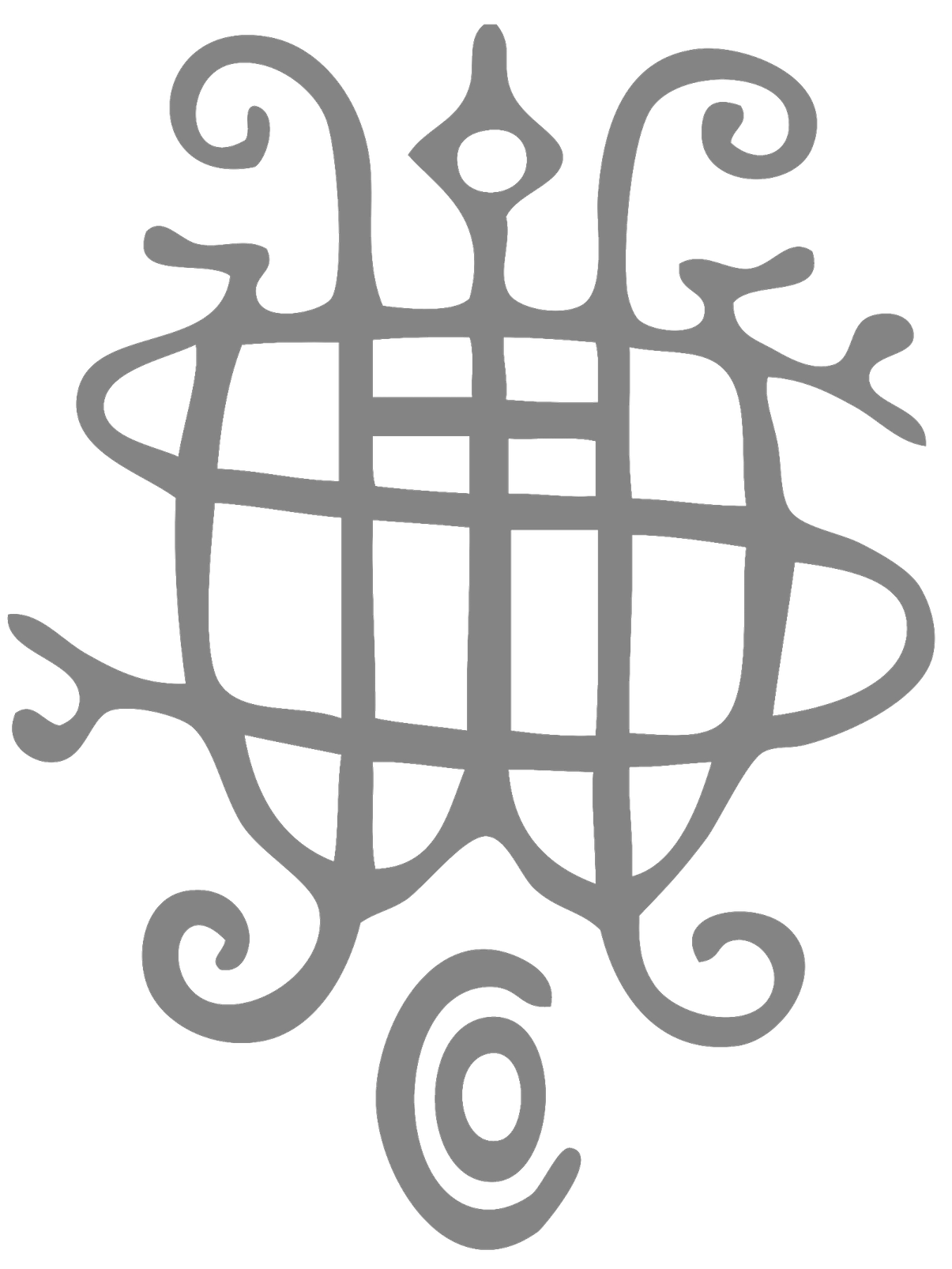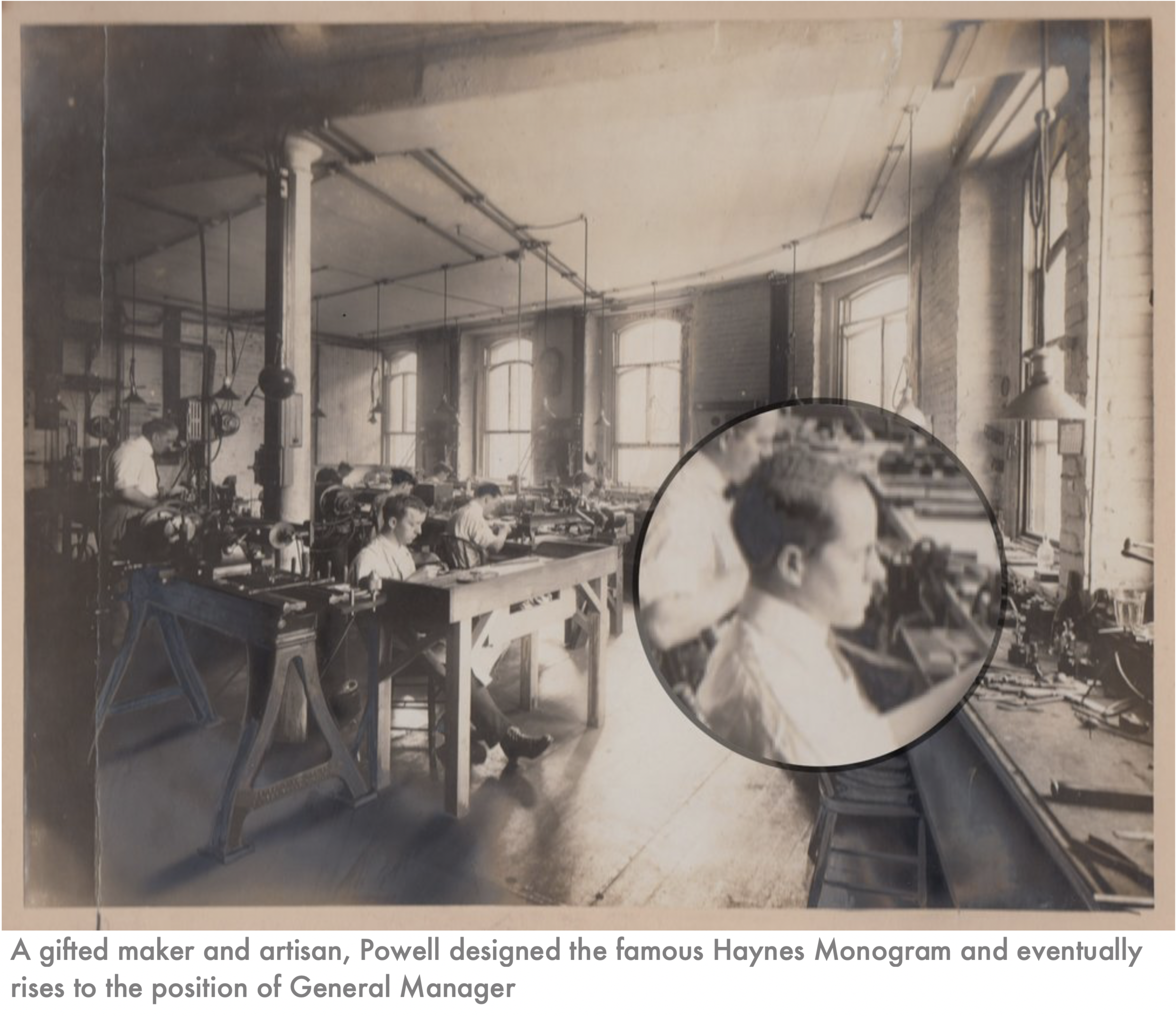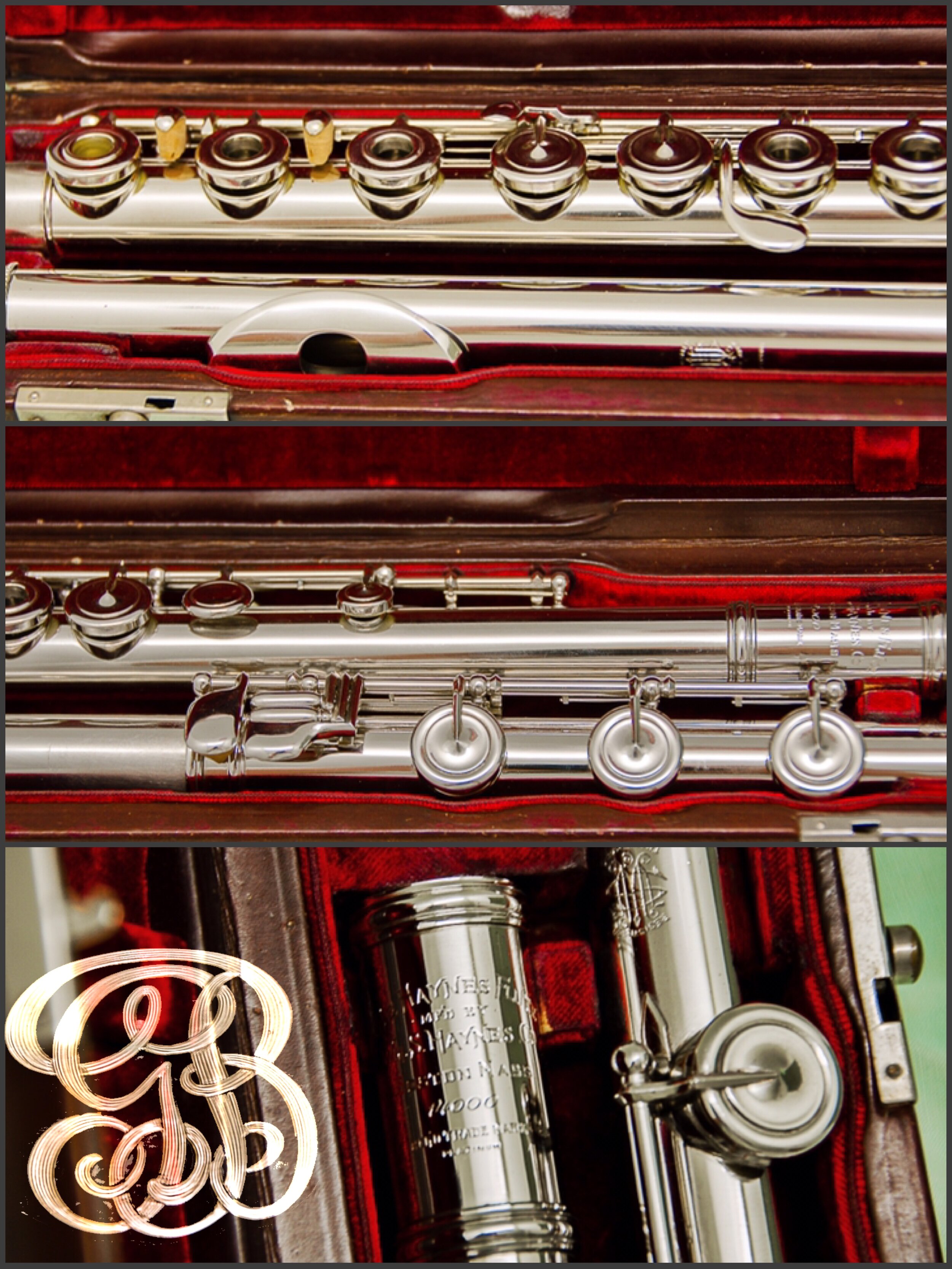1888 – The beginning
In 1888 Eduard Heindl, Principal Flutist of the Boston Symphony Orchestra, commissioned Rhode Island based silversmiths, William and George Haynes to create a wooden Boehm system flute.
William and George began their flute making career at the JC Haynes Company (no relation to the Haynes brothers) in Boston. They were quickly considered the heart and soul of the manufacturing operation.
The first 506 flutes made by the Haynes brothers bear the JC Haynes “Bay State Flute Company” name. The first Wm. S. Haynes Co. flute is #507. The brothers agreed to enshrine the start date for the Wm. S. Haynes Company as 1888.
1891 – Workshop moves to Chapman Place, Boston
1893 – Workshop moves to Sudbury Street, Boston
1896 – William Haynes produces the first gold flute made in America.
In 1896, William Haynes created the first American-made gold flute in 18k gold with an ivory embouchure, and sterling silver keys with gold inlays. The flute was made for the Principal Flutist of the US Marine Band, Henry Jaeger.
1897 – Workshop moves to Stanhope Street, Boston
1898 – Drawn Toneholes Invention
George Haynes invents a drawn tonehole manufacturing technique on an Alto Flute in F. This flute was made from silver dollars and a $20 gold piece. (pictured above)
Haynes has always offered a handmade, drawn tonehole professional flute ever since this landmark invention, and still offers one to this day.
1900 – Workshop moves to Washington Street, Boston (pictured)
1900 – Haynes Flute #507 is finished, the first instrument with Wm. S. Haynes Co. logo
1902 – Haynes makes their first E Flat and D Flat Soprano Flutes
A limited number of these “Little Haynes” flutes were made to order. The E Flat Soprano Flute is pictured above.
1906 – Haynes makes a left-handed, wooden Boehm System flute (pictured above)
1907 – Workshop moves to Washington Street, Boston (pictured)
1910 – Collaboration with Charles Howe.
In the company’s first collaboration with prominent teachers and artists of the day - Haynes made a flute to Howe’s specification including a G-A Trill, tuning slide and thumb rest. Howe was a famous flute educator and wrote one of the first widely published flute tutorials.
1912 – Haynes Showroom opens at 61 Hanover Street, Boston
1913 – Verne Q Powell (pictured) is employed at Wm. S. Haynes Co.
1914 – Additional workshop added at Elm Street, Boston
1914 – Haynes makes its first all-18K gold flute #2833.
1915 – Haynes makes their first solid silver piccolo #3188
1916 – Collaboration with the flutist Emil Medicus (pictured)
1918 – Workshop moves to 34 Columbus Avenue, Boston
1918 – Responding to many requests from American Bands - Haynes makes their first A flat Piccolo #4546
1918 – Wooden flute production ceases except for special orders
1919 – Georges Barrère, then principal flutist with the New York Symphony, becomes Artist Advisor to the company.
Together Haynes and Barrère developed the American version of the French Flute. The initial models had "Y" arms, but the later experimental flutes had French style pointed key cups. They carefully studied the existing flutes being made in France and made modifications that improved both the sound and functionality of these instruments. During this time-period, orders for silver flutes eclipsed and almost eliminated wooden flutes.
Haynes introduced the soldered tonehole model and popularized this flute worldwide. Major flutists gravitated to the Haynes for its sound and reliable mechanics. During this time, the Haynes logbooks show sales to a number of famous players, including Barrère (New York Symphony), William Kincaid (Philadelphia Orchestra), Leonardo De Lorenzo (New York Philharmonic) Georges Laurent (Boston Symphony), and John Wummer (New York Philharmonic).
1921 – Workshop moves to 135 Columbus Avenue, Boston (pictured)
1922 – Haynes opens the first New York City Boutique, which is run and managed by George Haynes on W 44th Street, NYC
1922 – Dayton C. Miller – physicist, astronomer, acoustician, and amateur flutist, begins a long relationship with Wm. S. Haynes.
1922 – Haynes collaborates with Georges Barrère to make a flute “with perforated keys” (open holes).
1926 – Haynes begins to make Silver Clarinets - making a total of 334 instruments until production ceased in 1942 (pictured right - thank you to the Metropolitan Museum of Art in New York City, NY)
1926 – Verne Q Powell leaves the company gifting a hand-engraved watch to William Haynes before his departure.
1935 – For reasons of superstition - there are no #13xxx flutes made - Haynes production jumps from #12999 to #14000.
Many #xx013 serial numbered flutes were also skipped during this time.
1935 – Platinum Haynes Flute #14000
In 1935 Georges Barrère commissioned a platinum flute #14000 from Wm. S. Haynes Co. This flute would be the world’s very first all-platinum instrument. To commemorate the premiere of this important flute, Edgard Varèse´ wrote ‘Density 21.5’ which Barrère premiered on the debut concert of this flute. 21.5 is the density of platinum.
1936 – Haynes makes an “Overtone Flute” as an educational tool for teaching about harmonics (pictured below)
1936 – William Haynes retires and moves to Florida. His wife, Lola Haynes, takes ownership of the Wm. S. Haynes Company.
1939 – William Sherman Haynes dies at his home in Florida. He is buried at Mt. Auburn Cemetery in Cambridge, MA.
1940 - During the war years, it is very difficult to obtain precious metals. In order to continue making instruments, the Wm. S. Haynes Company obtains government contracts. The Wm. Haynes Company still makes flutes for military bands and orchestras around the world.
1941 – Lewis “Lew” Deveau (circled in photo) joins the company and eventually becomes President and owner.
1947 – Haynes Workshop moves to 108 Massachusetts Avenue, Boston
1949 – L. Mont Allison becomes Director and President of the Company. Lola Haynes maintains ownership.
1953 – Workshop moves to 12 Piedmont Street, Boston (pictured) which would be the home of Haynes for the next 50 years.
1957 – Phillip Kaplan – Second Flutist in the Boston Symphony Orchestra becomes a consultant to the company.
1958 – Jean-Pierre Rampal gives his debut concert in the United States at the Library of Congress in Washington DC.
1959 – Haynes creates flute #29333 for Mr. Rampal.
Rampal gave the USA premiere of the Sonata for Flute and Piano by Francis Poulenc at this concert. Lola Haynes and Phillip Kaplan played a major role in bringing Rampal to the United States for this performance.
During his stay, Rampal made his way to Boston and visited the Haynes workshop. He had his older flute with him and asked if the Haynes Company could make a copy with sturdier keywork and a more comfortable scale. The artisans at the company were thrilled to make an instrument to his specifications and began making the great maestro's first Haynes flute.
Rampal’s flute was a French model, open hole, thin wall (0.09” wall), 14k yellow gold flute with C footjoint.
1960s
In the 1960s the Wm. S. Haynes Company averaged approximately 1,000 instruments per year. They made three styles of C flutes, the commercial model with drawn toneholes – with open or closed keys and "Y" arms, a handcrafted French model that came standard with thinwall (.014) tubing, and they continued to make wooden flutes.
1962 – L. Mont Allison dies, presidency of the company passes to Kenneth Cox - Allison’s brother-in-law
1965 – Kenneth Cox dies, Lewis Deveau becomes General Manager
1968 – Lola Haynes-Perkins passes away and ownership of the company goes to her family.
1976 – Haynes Company purchased by Lewis Deveau from Lola Haynes-Perkins family.
1977 – First Haynes 14K Gold Alto Flute (pictured - with thanks to Flute Center of New York) with Silver Keys #43900
1981 – The Deveau Scale is created as collaboration between Lewis Deveau and Phillip Kaplan. It was first intended as an improved A=440 scale, and later modified to A=442. Headjoint designs were also studied during this time. Careful research led to innovations such as varying riser height, over-cutting, under-cutting, and lipplate design, signalling the end of the "old style traditional" headjoints.
1988 – First 10K Gold Haynes Flute #48410 (modern 10K Flute pictured below)
1988 – 100th Anniversary of Haynes – Platinum Flute with 14K Keys #50000 made. (pictured being held by Lewis Deveau)
1993 - The first flute in space!
Dr Ellen Ochoa’s first venture into space was in April 1993 during a nine day science mission aboard the Shuttle Discovery.
When she was not busy using a suite of complex instruments to better understand the impact of the sun’s cycle on Earth, Ellen, a classical flutist, found time to play her beloved Haynes Flute, which she brought with her.
“In the near weightless environment, the flute practically held itself aloft,” according to NASA. But, because the Shuttle cabin is pressurized, the flute, in Ellen’s expert hands played exactly the same in space as it did on Earth.
1993 – Lewis Deveau dies, company passes to his widow, Anne Deveau
1995 – Anne Deveau dies, company passes to foreman, John C. Fuggetta (known as ‘Charlie’)
1995 – First 14k White Gold Haynes Flute #49950 is produced.
1998 – Collaboration with Jacques Zoon on a wooden flute begins, a limited number were produced. (Jacques pictured with John Fuggetta.)
2001 – John C. Fuggetta dies - the Fuggetta family continues to operate the company.
2004 – Eastman Music Company purchases the William S. Haynes Company.
Qian Ni (pictured) owner of the Eastman Company, originally came to Boston from Beijing in 1987 to study the flute. Ni was directed by his teacher to purchase a headjoint to improve his playing, and being keen to develop an American sound, he found himself at the Wm. S. Haynes Company.
Decades later when the Haynes Co. became available to purchase, Mr. Ni seized the chance to purchase the venerable company. Following the acquisition he set about a program of enhancements and redevelopment, which included hiring some of the best and most respected flutemakers in Boston. He invested in new manufacturing techniques and personnel to re-energize and reinvigorate the company into a modern, dynamic 21st Century operation.
2005 – Haynes Amadeus Flutes were introduced.
2006 – First Haynes International Flute Competition is won by Heather Holden
2007 – Second Haynes International Flute Competition is won by Benjamin Smolen (current Haynes Artist and Principal Flutist of Pacific Symphony)
2007 – Haynes Classic Flutes - which eventually became the Q Series Flutes - are introduced (pictured)
2008 - Haynes creates a Limited Edition Rampal Model Flute to commemorate the 50th anniversary of Jean-Pierre Rampal’s first US Performance (pictured below)
2008 – Headjoint Maker Zu Feng Le becomes Workshop Manager.
2008 – 5% Gold and Fusion materials are introduced for Custom Flutes (5% Gold Pictured below). The P style headjoint is also released.
2009 – In November 2009 Sir James Galway (pictured) visits the Wm. S. Haynes Company.
2010 – Workshop moves to 68 Nonset Path, Acton, MA
Haynes moves to a state-of-the-art facility with improved manufacturing space, a beautiful showroom, and room to expand.
2012 – Haynes introduces a pinless mechanism for all Custom Flutes (pictured above)
2012 – Haynes Amadeus Alto Flute is introduced (pictured)
2013 – The National Flute Association Haynes Challenge Endowment Fund
Haynes initiated this ground-breaking $125,000 fund-matching initiative in order to assist international artists appearing and performing at NFA Annual conventions, and beginning in 2019 to fund local youth events in convention host cities.
2013 – Haynes introduces the N Cut headjoint named after the Nagog Woods surrounding the workshop in Acton, MA
2014 – The Sir James Galway Model Q Series Flute is introduced.
2016 – New Lightweight Mechanism developed
In response to changing trends, a new Lightweight Mechanism was developed. The first flute made with this new mechanism was a 10K Flute #53535 (pictured). This is currently a standard option on Custom Flutes.
2016 – New Haynes Amadeus Models introduced – AF-580, AF-680, AF-780
2017 – The first 10K Flute with 14K Toneholes and Mechanism #53651 (pictured) is made and becomes a standard option for 10K Flutes
2018 – Haynes Celebrates 130th Anniversary with events and celebrations around the world
2018 – Haynes Amadeus Piccolo is introduced.
2019 – wmshaynes.com is redesigned to provide mobile access and detailed product information.
2020 - Haynes initiates Haynes University - a Music Education program put in place to support Haynes Artists and Flute Studios working remotely during the Pandemic. Over 3000 flutists have been reached since the program began, and Haynes University has now been designated as the “Education Wing” of the company.
2021 - Haynes launches a line of branded official merchandise - including T-shirts, hats, flasks and mugs.
2022 - Haynes introduces Custom Decorative Crowns complete with engraving and precious stones.
2023 - Club88 for Educators was launched - rewarding teachers for showing their love for Haynes.
2023 - Haynes introduces the S Cut - the first new Custom Headjoint Cut in ten years.
2024 - Aiven O’Leary becomes President of Wm. S. Haynes Co.
Aiven O’Leary began working at Haynes in 2010 and accepted the role of General Manager in 2013. As the Haynes Master Head Joint Maker, in her career she has crafted over 10,000 hand cut head joints.
































